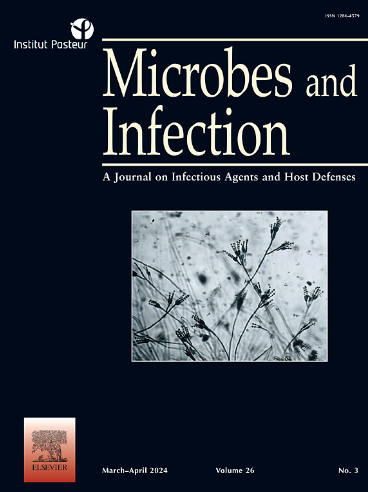Cross-species transmission and animal infection model of hepatitis E virus
IF 2.7
4区 医学
Q3 IMMUNOLOGY
引用次数: 0
Abstract
Zoonotic hepatitis E virus (HEV) infection is an emerging global public health concern, and understanding the dynamics of HEV transmission between animals and humans is crucial for public health. Animal models are critical to advancing the understanding of HEV pathogenesis, drug screening, vaccine development, and other related areas. Here, we provide an overview of recent studies investigating the cross-species transmission of HEV, and also delve into the current research and application of animal HEV infection models including non-human primates, rodents, pigs, and chickens, offering a comprehensive assessment of the advantages and disadvantages of each model. This review highlights the findings related to viral replication, shedding patterns, and immune response in these animal models, and discusses the implications for our understanding of HEV transmission to humans. These advancements in the field enhance our understanding of the biological traits and pathogenic mechanisms of HEV, offering robust support for the development of highly effective and targeted prevention and treatment strategies.
戊型肝炎病毒的跨物种传播和动物感染模型。
人畜共患戊型肝炎病毒(HEV)感染是一个新兴的全球公共卫生问题,了解HEV在动物和人之间传播的动态对公共卫生至关重要。动物模型对于促进对HEV发病机制、药物筛选、疫苗开发和其他相关领域的理解至关重要。在此,我们概述了最近研究HEV跨物种传播的研究,并深入研究了目前动物HEV感染模型的研究和应用,包括非人类灵长类动物、啮齿动物、猪和鸡,并对每种模型的优缺点进行了全面评估。这篇综述强调了在这些动物模型中与病毒复制、脱落模式和免疫反应相关的发现,并讨论了我们对HEV向人类传播的理解的意义。该领域的这些进展增强了我们对HEV生物学特性和致病机制的理解,为制定高效和有针对性的预防和治疗策略提供了强有力的支持。
本文章由计算机程序翻译,如有差异,请以英文原文为准。
求助全文
约1分钟内获得全文
求助全文
来源期刊

Microbes and Infection
医学-病毒学
CiteScore
12.60
自引率
1.70%
发文量
90
审稿时长
40 days
期刊介绍:
Microbes and Infection publishes 10 peer-reviewed issues per year in all fields of infection and immunity, covering the different levels of host-microbe interactions, and in particular:
the molecular biology and cell biology of the crosstalk between hosts (human and model organisms) and microbes (viruses, bacteria, parasites and fungi), including molecular virulence and evasion mechanisms.
the immune response to infection, including pathogenesis and host susceptibility.
emerging human infectious diseases.
systems immunology.
molecular epidemiology/genetics of host pathogen interactions.
microbiota and host "interactions".
vaccine development, including novel strategies and adjuvants.
Clinical studies, accounts of clinical trials and biomarker studies in infectious diseases are within the scope of the journal.
Microbes and Infection publishes articles on human pathogens or pathogens of model systems. However, articles on other microbes can be published if they contribute to our understanding of basic mechanisms of host-pathogen interactions. Purely descriptive and preliminary studies are discouraged.
 求助内容:
求助内容: 应助结果提醒方式:
应助结果提醒方式:


